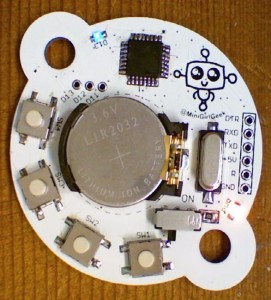iBoost64 Overview
iBoost64 is a little board to boost input signals and electrically clean them up. It is designed solely for use with the Pirocon2
Pirocon2 has 8 bi-directional pins that determine the direction (input or output) using the strength of the drive signal applied to them. We have found that some sensors have insufficient drive strength to reliably convince the level shifters that they should behave as inputs. This has the effect of appearing to randomly react to or ignore inputs – especially with marginal sensors.
This little board can be plugged onto the pins of the Pirocon that you want to use as inputs only. With the board in place, the selected signals are always inputs and cannot be outputs.
Because the power and ground pins go all the way across the 8×3 connector on the Pirocon, you can plug the iBoost64 into any position even with only 1 set of three pins (although it wouldn’t be very stable like that)
The iBoost64 has 6 inputs which can either be high or low (hence the 64 because 2^6 is 64)
- 6 non-inverting schmitt trigger inputs
- high hysteresis so slow moving signals produce a nice clean edge for the Pi
- Enables weak sensor outputs to drive the Pirocon directly
- Wheel sensors on Initio can be driven with 5V as intended and plugged directly into the iBoost64

